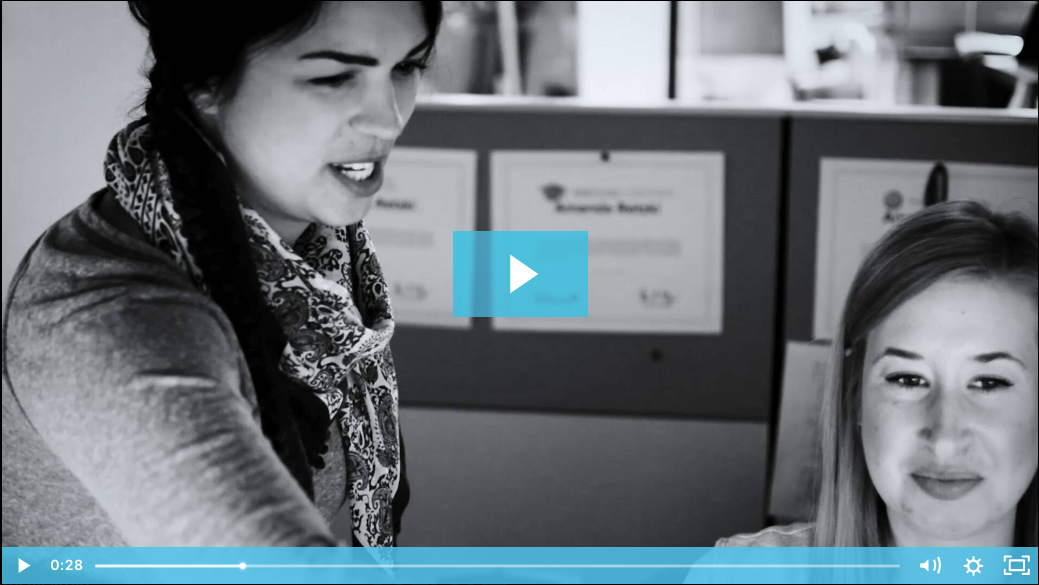MARKETING PROGRAM?
If you’re reading this page you’ve probably determined that inbound marketing has the potential to transform your business growth strategy and lead gen efforts... but you’ve got a lot of questions. Well, you’re in the right place.

Table Of Contents
Introduction
If you’re reading this page you’ve probably determined that inbound marketing has the potential to transform your business growth strategy and lead gen efforts...but you’ve got a lot of questions. Well, you’re in the right place. We’ve designed this page to answer some common questions, with topics covering everything from how to determine if you’re ready to take an inbound approach, to specifics about the skills required of your team and how long it takes to start getting results.Ready For Inbound
Taking an inbound marketing approach isn’t as easy as flipping a switch at headquarters and, voila, you’re doing inbound. There’s a fair amount of work to be done to prepare your organization (and your website) for this change in how you market, but you also have to be confident that your type of business is “right” for an approach that uses content to attract prospects.
So...how do you know if your business is right for inbound? The businesses with the greatest potential to generate quality leads with inbound marketing are those that sell highly considered purchases — the type that buyers spend time thinking about and researching, and that represent a good portion of their budgets.
One example is capital equipment, such as papermaking machines or conveyor systems. Buyers of these types of products need to make sure they’re making the best possible decisions (their careers and their company’s performance depend on it) and, to that end, they’ll spend time evaluating their options online, soliciting recommendations, and learning all they can in order to help them choose the best vendor partner.
Learn more about readiness and alignment with this resource:
The Inbound Marketing Readiness Assessment
The best way to determine if your company is “right and ready” for inbound is to participate in an inbound readiness assessment. This is a conversation between our team and yours during which we learn more about your business demographics, sales structure and sales cycle, customers and their buyer journeys, among other things, in order to help determine whether or not inbound will be effective in attracting qualified leads to your site and converting them into customers.
Learn more about the Inbound Marketing Readiness Assessment with this resource:
How much does inbound marketing cost?
This is a bit like asking, “How much will a house cost?” — it all depends on what you’re looking for and how soon you want it. In the same way, the cost of executing an inbound program depends on the speed of your sales cycle, how much content you’re willing/able to create, how many personas you’re targeting, how much traffic you already get to your website and other considerations. Most inbound marketing agencies will work within a client’s set budget, but sometimes that means slower return on investment. In other words, the more effort and resources you put toward your program, the faster you’ll see results.
What foundational work is needed before starting an inbound program?
For a program to be optimally effective, it has to be geared toward the right people at the right time with the right message. And the only way to know who those people are and what message will be most compelling to them is to understand everything about your business model, competitors, sales process, customers, growth goals, and more. The knowledge gained informs the way an inbound program is designed — and will have a significant impact on the quality and effectiveness of that program.
Learn more about the foundational work required to launch an inbound program:
Do I need a new website to do inbound marketing?
Maybe, maybe not. Some clients that come to us have attractive, functional and information-packed sites that just need some fine-tuning; others need us to work on some of the basics of inbound: blog content, conversion opportunities (offers) and landing pages, search engine optimization (making sure the site features keywords that prospects are using as they search for your product type), and other features. Some are overdue for a “facelift” that better communicates their expertise and relevance to prospects. There are a number of critical components of an effective website and their importance can’t be overstated — because your website is your inbound marketing engine.
Learn more about the importance of a robust inbound website:
Buy-in for Inbound
Inbound marketing represents a huge opportunity for businesses to more effectively market to their best prospects, close more opportunities and grow with their existing customers. It’s often a big shift from what companies are currently doing and it won’t work if it’s only the marketing department that’s on board.
Learn more about why cross-departmental buy-in is crucial to inbound success:
Inbound also represents a significant investment of time and money. That’s why it’s important to get the buy-in of your leadership team early in the process. There’s no better way to do that than with facts, and we’ve got plenty for you to share with them!
Whether it’s leadership, sales, or operations, educating your teams on what inbound is and how it works will go a long way towards getting buy-in and it will make your program more successful from the get-go, because they’ll understand what you’re doing and know how to participate.
Share these resources on the basics of inbound marketing with your teams:
Inbound Marketing Program Look Like?
Every inbound program is different, and each is aligned with specific industry and company needs and goals. But there are a few “must have” components for any inbound program to work well: social media promotion (especially on LinkedIn), regular content creation (blogs, tipsheets, videos, etc.), email marketing, search engine optimization and analytics. These are like cogs in an engine moving in an integrated way – one fueling the other – and they’re most effective when powered via a single platform (like the HubSpot software).
Learn more about the structure of an inbound marketing program:
What’s the inbound marketing Flywheel?
We’re all familiar with the traditional sales funnel graphic, but the problem with that model is that once a lead has become a customer, they depart the funnel and are, for all intents and purposes, gone. Sure, your customer service reps deal with them when the customer complains or has a question, but what most companies care about are the people IN the funnel.
The Flywheel is a “virtuous cycle” in which the customer continues to influence future sales, and where all departments within your company influence sales and satisfaction. This is a better way to look at selling and serving customers because there’s 360 degrees of focus on people who can provide force to revenue growth.
Learn more about the Flywheel and its value with these resources:
What technology is needed to execute an inbound program?
To execute the various components of inbound marketing, a company needs one primary tool: HubSpot. To execute any other way is far more time-intensive and costly. HubSpot is an all-in-one CMS, CRM and marketing automation platform that allows users to develop and manage their websites, create and promote content, manage leads and workflows, host videos, execute search engine optimization, do analytics, create editorial calendars, track pipeline revenue and much, much more.
Why choose HubSpot over others?
Hundreds of third-party companies, users, and technology experts around the world are eager to provide rave reviews of HubSpot — and for good reason. It seems we can’t say enough about it, either, because Weidert Group has written quite a lot of content around the subject. We recommend you do your own research, too, but below are some very helpful summaries about the features, benefits and value of HubSpot and other platforms.
Learn more about the technology needed to do inbound with these resources:
ROI/Payback of Inbound Marketing?
There’s no way to answer the ROI question in an etched-in-stone way, but we typically see significant progress within 6 months — more traffic, better quality traffic, more eyes on content within the site, and more prospect engagement.
There’s one thing that’s certain: the more you put into your program — the more blogs you write, the more content you offer, the more promotion of that content you do — the faster you’ll increase traffic to your site, the more leads who will convert, and the more leads you’ll turn into customers.
How do I calculate ROI/payback?
There are plenty of figures people look at to determine whether or not they’re getting a good return on their inbound investment: website visitors, opened emails, time on page, email click-thrus, organic traffic...the list is just about endless. Some of these metrics matter, and some don’t (those are called “vanity metrics”). What matters most is how many of your website visitors turn into leads, and how many of those leads turn into customers. The key is understanding how many new customers you need to win in order to pay for your inbound program. To do that you have to understand, among other things, Customer Lifetime Value (CLV).
Read these resources to learn more about CLV and ways to measure inbound success:
When can I expect traffic, leads and ROI?
Increases in traffic to a website are a result of publishing and promoting content that’s valuable to prospects as they learn about solutions to their challenges online and optimized for the way they search. The more you publish content about topics they’re interested in, the more traffic you’ll see to your site. And with more traffic you’ll see more (and more qualified) leads and, eventually, more leads turning into customers.
But you want to know when, right? Typically clients see results within the first 6 months, as it takes some time to generate the number of blogs and other content (tipsheets, ebooks, videos, guides, etc.) needed to give you a critical mass — the kind of mass Google needs to see in order to present you to searchers as a relevant and valuable resource. Sometimes results come much faster, and occasionally a little slower. Often that’s a function of the type of industry you’re in: if you’re a niche industry with relatively few prospects, it may take longer to see an uptick than if you sell something more mainstream.
The speed at which those leads become customers that contribute to ROI/payback depends on a number of factors, including the length of your sales cycle.
Learn more about when you can expect results:
How can I speed up ROI?
When we develop an inbound marketing program for a client, we always include the development of some “quick wins” that will speed up the pace at which you start attracting prospects to your site. That’s because it can take a few months of generating and publishing content for Google to “see” your business as a legitimate and valuable resource for prospects searching online. To jumpstart the traffic, we have a few tricks up our sleeves!
Learn more about jumpstarting your inbound efforts with these resources:
Agency vs. DIY
Companies that have robust marketing departments may have all the resources they need in-house to execute an inbound marketing program, though this is rare. That’s because inbound marketing requires that, in addition to project management, the team has content creation skills, search engine optimization knowledge, analytics experience, email marketing know-how, social media expertise...and much more. Is it doable? Yes. Is it usually more effective (and cost-effective) to work with an agency that specializes in inbound marketing? Yes. (Really, what did you think we’d say?)
Learn more about hiring an agency vs doing it yourself:
What expertise/capabilities does my team need to do inbound?
Working with an agency can look one of three ways: your agency can essentially act as your marketing department, it can be a valuable supporting “arm” of your department, or it can do defined types of work in support of your team (who would do the majority of the work). Our most common engagements are of the first and second nature, in which we act as the company’s marketing department or do the majority of the inbound work. At the very least, a company must have one (or more) people in-house who are dedicated to working with the agency to make decisions and help manage the work.
Learn more about the skills you’ll need in-house:
How can an agency write content for my business?
Weidert Group writes for a broad range of B2B businesses, including companies that make whey protein ingredients for food manufacturers, above-ground steel welded storage tanks, modified shipping containers, manufacturing productivity software, data center enclosures and many more. Each is complex, and it takes an experienced team to be able to quickly learn the nuances of the business (and its customers) to be able to write meaningful content for them. We do it by hiring only experienced writers (ours have an average 26 years experience) and by going through a process with clients to learn the specifics of their businesses.
What’s the benefit of hiring an agency to do inbound?
There’s no denying that working with an agency will save significant time and help organizations reach their goals faster when they work with an experienced inbound marketing agency. Doing inbound on your own is a little like trying to build a house without the expertise of a builder: you could do it, but it’s not going to turn out real well, (unless you’ve built houses before) — and it will take a lot longer!
That being said, some of our client engagements are limited to developing the program and running it for several months while we train the client team in all aspects of inbound marketing — then gradually turning over responsibility for content development, lead nurturing, social media, email marketing and all other aspects of inbound. How we design and manage the program depends on the capabilities you have in-house, and the budget you’re able to devote to inbound.
A benefit of working with an agency that’s often overlooked is technology. To execute an inbound marketing strategy, you’ll need to invest in technologies that make it possible to manage your website and its content, to monitor your social media presence, to analyze (in real time) your website’s traffic and engagement, to create workflows and use them to nurture prospects, to manage customer relationships (a CRM tool), and others. It’s a big investment and one reason many businesses choose to work with an agency that’s already made the investments and continues to update their technology.
Learn more about the benefits of working with an agency and the split of responsibilities:
What to look for in an inbound marketing agency
If you’re considering hiring an inbound agency, take a look at these guidelines to help you evaluate the quality of their work and how well they align with your needs and culture.
Learn more about how to find the right agency fit with these resources:
What Are the Next Steps?
Reach out to Nicole Mertes, VP of Business Development, to talk about what your best next steps might be.
It could be that you’re ready for an Inbound Marketing Readiness Assessment, but maybe you need help getting buy-in from your leadership. Or maybe you just want to have a casual conversation. Fill out the form below and we’ll find out together!






































